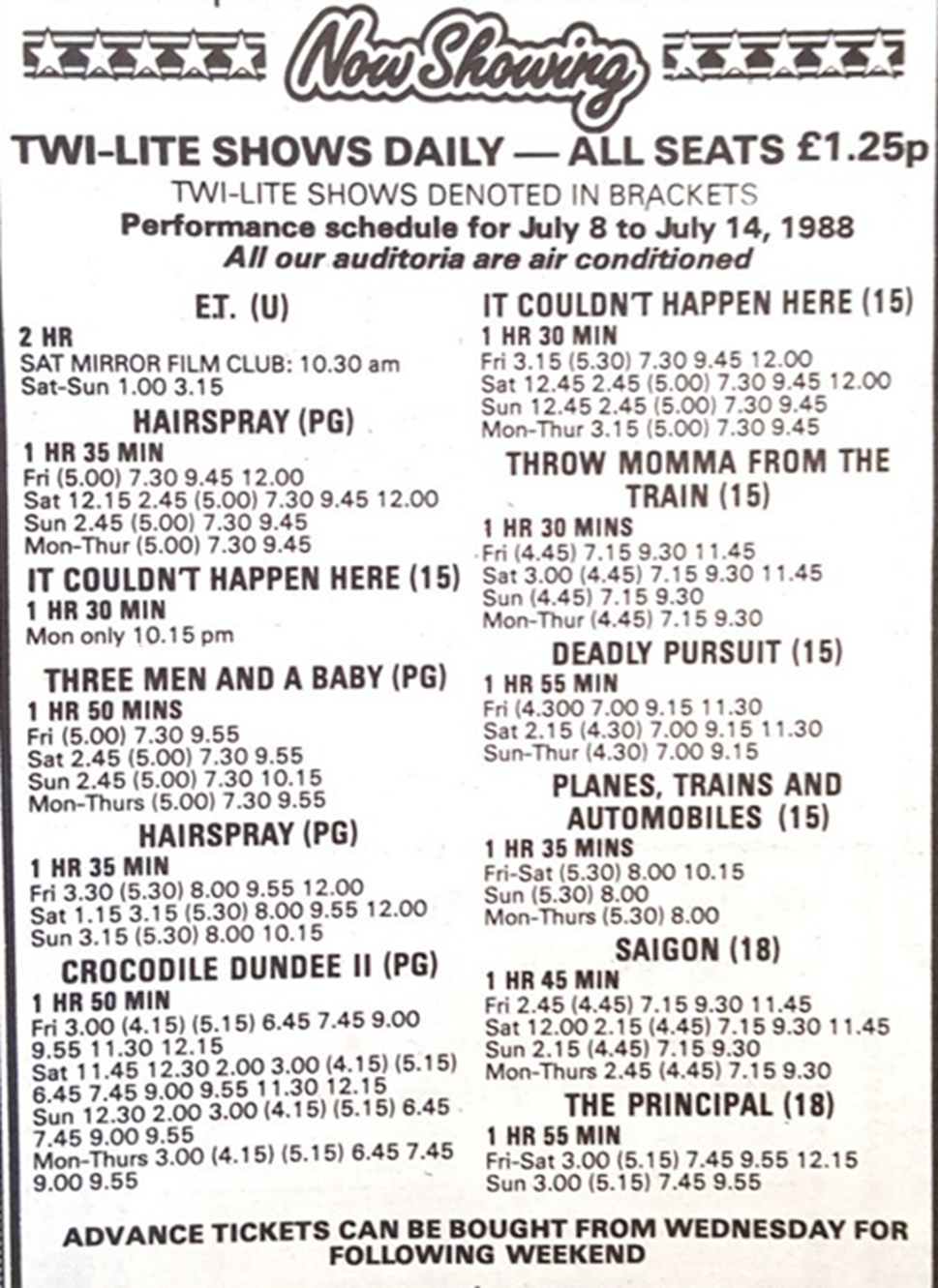A feature length production?
As a young man I visited the cinema often.
Now in the 1980s the cinema experience was rather different to today, with the film industry struggling to compete with home entertainment (and in particular the (then) exciting new technology of VHS video) and many of the established cinemas having only one screen to show the latest Hollywood releases.
Yet, like them or loathe them, the arrival of multiplex cinemas helped turn things around, as did some great cinematic releases at the end of that decade and into the early 1990s. The poster below demonstrates the film fare available to cinema goers this week some 37 years ago:

Film duration
All very interesting of course, but what’s my point? A closer look at the detail will highlight one very significant difference between the making of movies in the 20th and 21st century. That difference is the length of the feature film.
Steven Spielberg’s landmark sci-fi film “E.T.” was the longest movie shown that week at 2 hours exactly. Every other film available on the above dates (including one of my personal favourites, “Planes, Trains and Automobiles” ) clocked in at a duration of between 90 and 120 minutes. And even these times were considered lengthy when compared to the average feature length productions from the 1950s, ‘60s and ‘70s. These films typically had a maximum run-time of 90 minutes or less.
Compare and contrast those film times to the movies of today. A quick look at the summer blockbuster lists for 2025 suggest that a running time of two hours plus is now the norm and not the exception. The new Superman movie runs for 129 minutes, the Marvel Cinematic Universe alternative of The Fantastic Four: First Steps a minute longer, whilst Jurassic World Rebirth and F1 The Movie clock-in at 134 minutes and an arse-numbing and bladder-bursting 156 minutes, respectively. With films getting longer and longer there is now even serious talk of reintroducing an “interval” mid-film to alleviate some of those longer-film duration issues.
The story suffers
Yet whilst the films are now significantly longer the storytelling and messaging may well have suffered. Indeed, it feels to me that often the essential storyline is now considered rather secondary to special effects and ancillary script and image padding that adds very little or nothing to the final product or message.
This expansion of storyline padding to fill a perceived time gap is perhaps most evident in the cinematic releases of The Hobbit trilogy last decade. This short children’s book (that can be easily read in half a day) was somehow extended into no less than three movies, with each one exceeding 160 minutes in length. It is self-evident that it should take longer to read a book than watch a film based on that book.
Audience engagement is key
Now you may – or may not – agree with the expansion of film times. That is of course your right as a member of the movie-going public, and you can vote with your feet (and your wallet) if the feature lengths become unattractive to you.
Yet the same luxury may not be available to you if you are forced to sit through a horribly long business presentation. Business etiquette dictates that it is both bad manners and bad for business to simply leave a seminar room or log-off early from a webinar when faced with a presenter that could have concluded their presentation in half the allotted time. It follows that the typical business presentation attendee will endure the delivery whilst actually thinking about (or in the case of a webinar probably doing) something else entirely.
The reality is that the expansion of presentation content to the time available will usually be a mistake that simultaneously disengages your audience, prevents your core messages from landing, and limits any potential sales to be made.
Stay focussed
It follows that it is very much in the interest of both sides – presenter and attendee – to ensure your messaging is concise and delivered within a reasonable time frame.
As a rule of thumb most attendees will lose focus on any given business presentation if it exceeds the 30-minute mark, and it is for this reason that I so often decline – or at least renegotiate – speaking slots asking me to fill (say) 45 minutes or even an hour. And I would encourage you to take a similar position with your professional speaking duties.
The bottom line is that even with a captive audience it is better to speak powerfully for less time than waffle for far longer. After all, you want your audience to focus on your messaging and not daydreaming about their next choice of summer blockbuster movie at their local cinema.
Until next time.
Steve